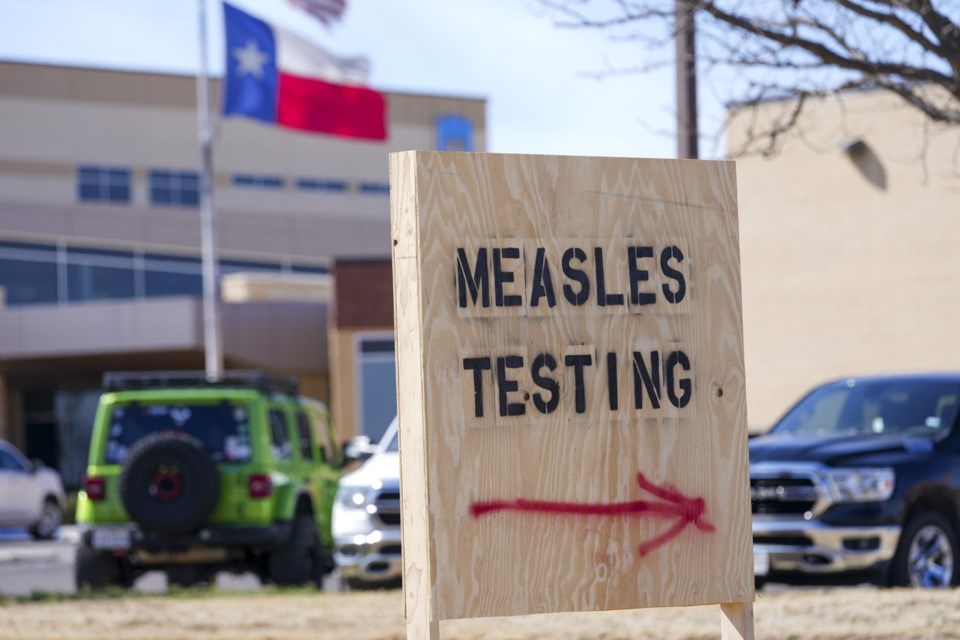The U.S. is having its worst year for measles spread in more than three decades, with a total of 1,288 cases nationally and another six months to go in 2025.
The U.S. Centers for Disease Control and Prevention said Wednesday that the national case count surpassed 2019, when there were 1,274 cases for the year and the country almost lost its status of having eliminated the vaccine-preventable illness. That could happen this year if the virus has nonstop spread for 12 months.
This year's outbreaks, some of them interconnected, started five months ago in undervaccinated communities in West Texas. Three people have died — two children in Texas and an adult in New Mexico — and dozens of people have been hospitalized. Public health experts maintain the true case count may be higher than state health departments have confirmed.
North America has three other major measles outbreaks, with 2,966 cases in Chihuahua state, Mexico, 2,223 cases in Ontario, Canada and 1,230 in Alberta, Canada. Twelve other states have current confirmed outbreaks of three or more people — Arizona, Colorado, Georgia, Illinois, Iowa, Kansas, Michigan, Montana, New Mexico, North Dakota, Oklahoma and Utah — and four other states saw their outbreaks end.
The measles, mumps and rubella vaccine is 97% effective at preventing measles after two doses.
The World Health Organization said in 2000 that measles had been eliminated from the U.S.
The CDC identified 22 outbreaks in 2019, the largest being two separate clusters in New York — 412 in New York state and 702 in New York City. These were linked because as measles was spreading through close-knit Orthodox Jewish communities, the CDC said.
It's a similar situation in North America this year, where the Canada, Mexico and Texas outbreaks stem from large Mennonite communities in the regions. Mennonite churches do not formally discourage vaccination, though more conservative Mennonite communities historically have low vaccination rates and a distrust of government.
A recent study found childhood vaccination rates against measles fell after the COVID-19 pandemic in nearly 80% of the more than 2,000 U.S. counties with available data, including in states that are battling outbreaks this year.
Only 92.7% of kindergarteners in the U.S. had the measles, mumps and rubella vaccine in the 2023-2024 school year, below the 95% needed to prevent outbreaks. In Gaines County, Texas, the epicenter of the Texas outbreak, only 82% of kindergarteners were up-to-date with MMR vaccines.
State and federal leaders have for years kept funding stagnant for local public health departments' vaccination programs that are tasked with reversing the trend.
“What we’re seeing with measles is a little bit of a ‘canary in a coal mine,'" said Lauren Gardner, leader of Johns Hopkins University's independent measles and COVID tracking databases. "It’s indicative of a problem that we know exists with vaccination attitudes in this county and just, I think, likely to get worse.”
___
The Associated Press Health and Science Department receives support from the Howard Hughes Medical Institute’s Department of Science Education and the Robert Wood Johnson Foundation. The AP is solely responsible for all content.
Devi Shastri, The Associated Press



